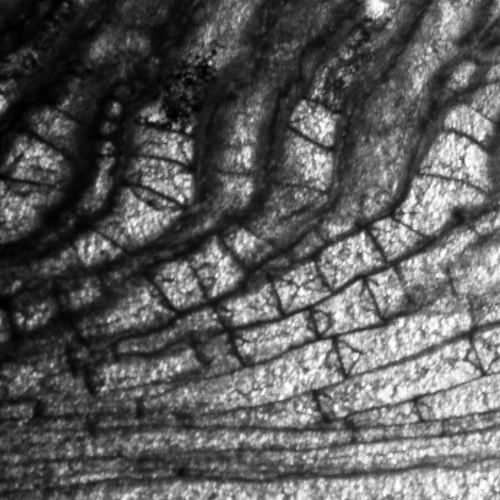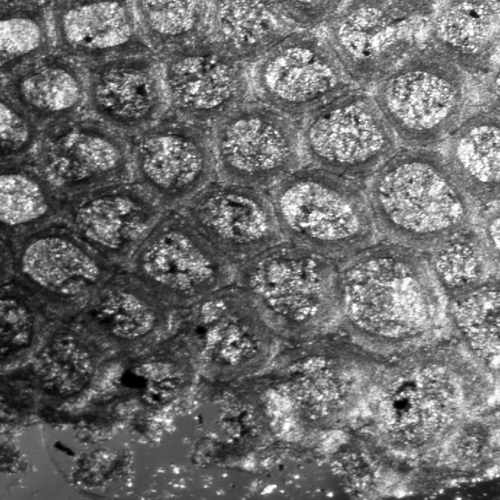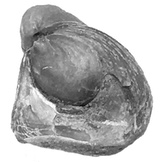Eridotrypa


Eridotrypa sp. in longitudinal (left) and tangential (right) sections. Field of view is 1.5 mm. CMC 21545.
Eridotrypa is ramose and slender. Zooecial openings are oval and zooecia meet the surface obliquely. Walls are subpolygonal, and zooids do not display a repeated arrangement. Large zooids present in center of endozone, and zooids distinctly narrow in outer endozone. Diaphragms common near bend and inner exozone. Mesozooids common at wall junction and appear at base of exozone. Styles are numerous.
Although there are unconfirmed reports of this genus from the upper Cincinnatian, it is probably limited to the basal Cincinnatian (lower Kope and Clays Ferry) and the underlying Lexington Limestone.
Species
Eridotrypa mutabilis Ulrich, 1893
Occurrence: Point Pleasant, Clays Ferry, Whitewater
Reference: Anstey and Perry, 1972; Karklins, 1984; Anstey and Wilson, 1996; Schumacher et al. in Davis and Cuffey, 1998 (mention)
Includes Eridotrypa aedilis
The report of this species from the Whitewater is unconfirmed and doubtful.
Eridotrypa sadievillensis Karklins, 1984
Occurrence: Point Pleasant, Clays Ferry
Reference: Karklins, 1984
Eridotrypa simulatrix (Ulrich, 1890)
Occurrence: Waynesville
Reference: Dalvé, 1948
Originally named Batostomella simulatrix. Also called Monticulipora simulatrix.
This species has relatively few diaphragms and may belong in Batostomella.
Eridotrypa trentonensis (Nicholson, 1881)
Occurrence: Clays Ferry
Reference: Karklins, 1984
Originally named Monticulipora (Heterotrypa) trentonensis. Also called Monotrypella trentonensis

